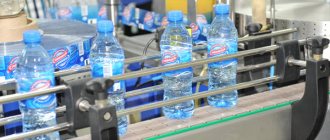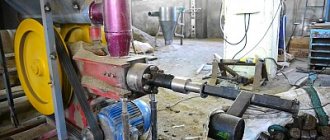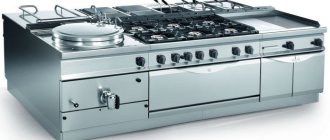It is well known that drinking water is a food product and is properly purified and filtered water from artesian wells. The packaging for it can be either plastic or glass containers.
Today in Russia the opportunities for starting your own, real income-generating business related to the production and sale of drinking water are truly colossal. Due to the fact that the quality of tap water has long left much to be desired, and population incomes are growing year by year, the market for artesian water consumption has a clear tendency to expand by 15-17% annually.
Types of drinking water
Drinking water differs in the method of extraction and chemical composition. To organize the production of drinking water, you need to understand its classification:
- Spring water. It is subject to natural filtration through soil or sand, therefore it is suitable and healthy for consumption. However, due to the ubiquity of industrial waters, even spring waters do not guarantee safety.
- Melt and rain water. Pure rainwater is enriched with all microelements necessary for humans. But, given the current state of the environment, doctors do not recommend using rainwater even for external water procedures, much less for drinking. The situation is similar with melt water.
- Artesian water. It is extracted from wells with a depth of 100 meters. This depth ensures the freedom of artesian waters from groundwater contaminated with the products of anthropogenic activity. Therefore, manufacturers strive to emphasize that their drinking water is obtained from an artesian well. However, well water is also saturated with harmful impurities, such as iron. Therefore, the production of bottled drinking water includes several stages of purification.
- Tap water. Contains a huge amount of iron, which accumulates in the body, causing various kinds of diseases. Even boiling does not destroy microbes, pesticides, and, of course, salts and heavy metals.
Bottled drinking water must meet some general indicators, in particular:
- be odorless and colorless;
- do not contain viruses and pathogenic microflora;
- have a pH of 6.5 - 8.5;
- contain an acceptable percentage of impurities.
But bottled water, depending on specific indicators, can be of first or highest quality:
- The highest quality water guarantees a balance of micro and macroelements. Thus, the presence of fluorine in the highest quality water is at least 0.6 mg/l. Ideal physiological norms provide a person with calcium, magnesium, fluorine, iodine and other substances. In fact, one bottle of such water replenishes a person’s daily need for mineral components.
- Water of the first quality is suitable for consumption, but the requirements for the amount of micro and macroelements for it are softer. The first quality water can be tap water, purified from chlorine, iron and saturated with minerals.
Registration and organization of business
The first thing an organization starts with is registration of a legal entity. First study the tax code of the Russian Federation in its modern edition; you will need to choose a taxation regime for your limited liability company. Additionally, you will need to obtain permits.
Required Documentation
Before talking about permits, I would like to pay special attention to the laws in our country. A businessman who decides to open even a small production of bottled water will need to familiarize himself with the Law “On Subsoil” No. 2395-1. Additionally, you need to familiarize yourself with the Resolution of the Supreme Council of the Russian Federation No. 3314-1 “On the procedure for licensing the use of subsoil.” Everyone will need to obtain a license.
In general, the following documents will be needed:
- subsoil use license;
- permission from local authorities for the design and construction of the plant;
- conclusion of the SES for drilling a well.
In parallel with this work, the following is being carried out:
- plant construction;
- well drilling;
- purchase of equipment.
Premises and equipment
The location of the plant plays a huge role; the well should be nearby. Sometimes it happens that an entrepreneur first drills a well for himself, after which he realizes that the quality of the water is excellent. This must also be confirmed by an examination. Next, the procedure for registering land and building a plant on this site begins.
Whatever happens in your case, remember that the process will be lengthy.
Bottled water can be obtained in two ways:
- Extract it from the depths, as from an environmentally friendly source (this is rare).
- Extract water from the well and purify it to normal levels using equipment.
A huge amount of equipment is produced for purifying and bottling water. It all depends on what financial resources the entrepreneur has. The stages that water goes through when it needs to be purified:
- production using pumping equipment;
- several stages of cleaning;
- blowing plastic containers;
- ozonation (not always carried out);
- bottling;
- capping;
- sticking up labels.
Obviously, you will need to purchase a large amount of equipment. At a minimum, this list will include:
- pump equipment;
- storage capacity;
- coarse filter;
- reverse osmosis installation;
- carbonation line;
- blowing line;
- bottling line;
- ozonizer;
- labeling machine;
- blockage line.
After the water has risen from the depths and settled in a storage tank, it must be taken for analysis. This allows you to determine the initial composition. In some cases, additional filters may be needed. For example, if it contains nitrates or other substances. And these are additional costs.
At our own production, we determine the place for:
- Finished goods warehouse.
- Pumping station.
- Bottling shop.
- Product cleaning shop.
- Capping/ozonation/carbonation workshop.
- Laboratory.
- Non-production premises.
Any production involves not only manufacturing, but also the purchase of related products, as well as a sales department. It is appropriate to create your own laboratory that will monitor water quality daily. If you do not take advantage of this, you will have to spend money on examination.
Requirements for drinking water quality
Bottled drinking water must meet certain standards. These include the following:
- there should be no mechanical impurities in the water;
- it must be free of harmful substances;
- there should be no elements of human origin in the water;
- microbiology and parasitology standards must be observed.
This is a rough estimate; a laboratory will perform a more qualitative analysis.
Features and production technology
There are several types of products produced in such production:
- Water in a blow molded plastic container.
- Water in ready-made returnable polyethylene containers.
- Water in glass.
Water in glass is considered the most expensive and environmentally friendly, but selling it is not profitable. Sometimes production produces such water in order to expand the range. Due to the high cost of the bottle itself, the cost of the finished product also increases.
Ozonation technology enriches the finished product with oxygen. It is used in many industries, including leading ones. You can start producing water only after the approval of the technological map.
Staff
The first person with whom an entrepreneur will have to collaborate at the stage of opening a plant will be a technologist. His participation in the launch process is mandatory. The presence of a technologist already at the production stage is not always justified, but the launch must be carried out according to all the rules. Those who want to save money enter into an agreement in advance with an experienced specialist who controls:
- Purchase of equipment.
- Organization of the technological process.
- Launch of the plant.
The production will employ a large number of workers. These include:
- purchasing and sales managers;
- laboratory assistants and head of the laboratory;
- shop workers and supervisors;
- movers;
- marketers;
- masters;
- security guards;
- drivers;
- accountant;
- cleaners;
- electrician and other workers.
Sometimes it is appropriate to involve an economist in the work, who will prepare the estimated cost of the project in advance.
Advertising and sales
Marketing finished products is also a complex process. We talked earlier about the importance of going out and covering the market in your region. Therefore, a high-quality marketing program is required here. The buyer is interested in different ways:
- Place advertisements on television and radio.
- Place images on billboards.
- Participate in charity events and sponsorship programs.
Additionally, a label design and the name of the water are developed. This is also part of the marketing program. Additionally, contracts are concluded with large stores. You can open an office to distribute water directly to the population in replaceable containers.
Production technology
The production of drinking water is an extremely complex multi-stage process.
The full production cycle begins with the extraction of water from a well, river, lake, or taking it from the city water utility. Beginning entrepreneurs prefer to register their own well, despite the complex bureaucratic process. And this is the right decision.
Firstly, water in the city water supply does not always come from an artesian well. The source can be a regular river water intake. Secondly, in order to conclude an agreement with the authorities on joining the local water utility, you will have to spend the same amount of time as registering a personal well. And finally, drinking water obtained from your own well will always be valued higher by consumers.
Water extracted from the depths of the earth is initially unsuitable for drinking, since it is oversaturated with harmful impurities and salts. Therefore, the water pumped out by pumps enters the water treatment workshop. Here it is cleaned with coarse and fine filters.
Further, the production of drinking water continues by selecting a balanced microelement composition. The water definitely needs to be rid of excess iron and manganese. But you can’t overdo it in order to preserve your own beneficial composition of micro and macroelements. In general, the purification technology is selected based on the composition of the water.
If you thoroughly taste several types of drinking water from different manufacturers, you will understand that the tastes are different. Some manufacturers add more potassium to the water, others more calcium. We said that strict composition requirements are imposed only on water of the highest quality. But elements such as selenium, fluorine, iodine must certainly be present. Our Siberian waters are poor in such substances, but they are vitally necessary for the human body.
During the production of drinking water, samples are taken at least 2 times: after completion of the water treatment stage and immediately before bottling. At advanced water plants, such as the Aqualine plant in the village of Nizhny Arkhyz (Karachay-Cherkessia), water samples are taken every 30 minutes.
Purified and saturated water enters the water bottling line. Modern water bottling lines are fully automated. This means that the operator monitors only the electronic console, the display of which reflects the states of all system units and other information. Most lines have built-in inkjet printers that mark the bottle: they put the bottling date and registration number. Thermal crimping of the caps takes place in special shrink tunnels.
Used bottles can be refilled (up to 50 times). Used 19-liter bottles are washed with special ultraviolet water, then with regular water. The lids are also treated with ultraviolet light.
What should the technology be like?
The technology should make it possible to disinfect and enrich water with oxygen. Water must undergo ozonation before bottling in order to obtain positive properties for humans and the ability to be widely used for medical and preventive purposes. Such water is capable of retaining its beneficial properties for quite a long time.
Also, you won’t have to chlorinate your water, literally taking away all the good things and leaving all the negative ones. To start this type of production, you will have to purchase the following:
- ozone generator;
- ORP controller with ORP sensor;
- thermocatalytic ozone destructor;
- inverter pump;
- injector, shut-off valves, fittings;
- duplex automatic dehumidifier;
- automatic start, level sensors.
Equipment
To equip a plant for the production of drinking water, even with small production volumes, serious investments will be required. The main expense item will be equipment for extraction, purification, saturation with substances and bottling of water:
- well pump - 150,000 rubles;
- pipes connecting the pump and tanks, components for them - 450,000 rubles;
- water treatment system, consisting of storage tanks (stainless steel, volume about 17 m3), coarse and fine filters - 600,000 rubles;
- ozone installations – 250,000 rubles;
- automated water bottling line – 1,600,000 rubles;
- system for washing and disinfecting containers – 500,000 rubles;
- 19-liter plastic bottles made of polycarbonate (500 pieces) – RUB 100,000.
Total: 3,650,000 rub.
Payback period
The business plan for production includes the following expenses:
- Purification and mineralization equipment – 350,000 rubles;
- Filling device – 700,000 rubles;
- Bottle production – 400 thousand;
- Machine for gluing labels – 200 thousand rubles;
- Automated line – 1,000,000;
- Motor transport – 250,000;
- Advertising – about 70,000;
- Wage. The staff consists of 9 people - the optimal number for the normal functioning of the enterprise. Average salary = 20,000 rubles.
And the cost of opening an enterprise will be 5,760,000 rubles. Average productivity is 1,500 bottles per hour. 264,000 are produced per month. Wholesale price per bottle = 20 rubles/1.5 liters. Then the net monthly profit minus all deductions will be 290 thousand. As a result, the full payback period will be 20 months.
Rent
Finding a suitable building to house a small drinking water plant is not easy.
Artesian waters lie at a depth of 100 meters. The surrounding soil should not be swampy or rocky. In addition, registration of a well requires compliance with certain conditions, for example, there should be no polluting sources (gas stations, industrial facilities, landfills) within a radius of 300 m.
You should consider in advance how employees will get to the plant located outside the city limits. There may be a need to introduce a corporate bus for distribution.
So that the premises can be divided into a production workshop, a warehouse for storing finished products, a container warehouse, a packaging workshop, staff rooms, an administrative office and a bathroom, an area of 100 m2 is sufficient. It is assumed that the building is rented along with the land plot on which the well and pumping station will be located.
The monthly rent will be approximately 200 thousand rubles.
Hygienic standards for bottled water
As a rule, the implementation of the idea of opening your own water production plant largely depends not only on the amount of start-up capital, but also on various obstacles on the part of supervisory authorities. Bottled water belongs to the category of food products, which means it is subject to special control by the state. So, what are the requirements for the quality of drinking water and production activities?
The main requirements for the quality of drinking water are that it should not contain parasites, microelements, or radionuclides harmful to the human body, and should have a safe chemical composition and good taste. SanPiN clearly defines the limit values for the content of certain substances in water. For example, the maximum water hardness is 7.0 mg/l, iron - 0.3 mg/l, copper - 1.0 mg/l, nitrates - 45 mg/l. The full list of indicators contains 44 items.
The sanitary standards imposed on drinking water producers are very extensive and varied and all of them, one way or another, are aimed at maintaining safety and ensuring the quality of the products produced. For example, the land on which a well is drilled for water extraction, as well as the land on which the enterprise itself is located, must be examined for soil contamination with chemical, bacteriological and radiological elements. In addition, equipment involved in the extraction, purification, transportation and storage of water must undergo radiation monitoring once every two years. Also, once every 2 years, well heads are monitored for the presence of radiation. Detailed and detailed provisions regarding standards for the extraction, purification, disinfection, bottling, storage and transportation of water are set out in the Sanitary Rules and Standards.
Documentation
The opening of drinking water production is preceded by the collection of a significant number of documents:
- License for the right to use subsoil. Exploration of deposits for wells should take place in collaboration with geological services. The first water intake is tested by the laboratory. The license is issued by the Department for Subsoil Use after approval of the deposit by Rosprirodnadzor. The finished well must be accepted for operation by the state acceptance committee and registered. A security zone is created around the well, and a final geological examination is carried out. More information about the procedure and necessary documents can be found in the Federal Law “On Subsoil”.
- Water quality certificate. Issued based on the results of the hygienic conclusion of the SES.
- Lease agreement for land and premises (or certificate of ownership).
- Conclusion of the fire inspection on the compliance of the premises with safety requirements.
- Agreement with an energy supply company.
Financial plan
To calculate the effectiveness of the organization, it is necessary to calculate the estimated cost of the entire project. The estimate consists of the following points:
- Purchase of a plot of land - 480 thousand rubles.
- Purchase of main and auxiliary equipment - 5659.30 thousand rubles.
- Working capital - 1122.66 thousand rubles.
- Installation of main and auxiliary equipment - 3973.85 thousand rubles.
- Other expenses - 4629.42 thousand rubles.
- Rent or construction of premises for production - 70,397.75 thousand rubles.
Working in this area is profitable, but only if you are able to organize everything correctly and conduct a successful advertising campaign.
for 550 rubles, from our partners, with a quality guarantee. It is not publicly available on the Internet. Contents of the business plan: 1. Confidentiality 2. Summary 3. Stages of project implementation 4. Characteristics of the object 5. Marketing plan 6. Technical and economic data of the equipment 7. Financial plan 8. Risk assessment 9. Financial and economic justification of investments 10. Conclusions
Staff
Due to the complex process of drinking water production, a considerable staff of employees will be required:
- specialist in water extraction from a well (2) – 70,000 rubles;
- chief technologist (1) – 40,000 rubles;
- laboratory technologist (2) – 50,000 rubles;
- installation engineer (1) – 30,000 rubles;
- bottling line operators (4) – 100,000 rubles;
- manager of a finished products warehouse (1) – 35,000 rubles;
- handyman (2) – 40,000 rubles;
- dispatcher (2) – 40,000 rubles;
- driver (2) – 50,000 rubles;
- loader (4) – 100,000 rubles;
- sales representative (1) – 50,000 rubles;
- accountant (1) – 30,000 rubles;
- cleaning lady (2) – 30,000 rub.
Total: 665,000 rub.
Manufacturing technology
In order for you to get a finished product, you need to go through several stages. The production of drinking bottled water begins with the receipt of raw materials.
To store it, you will need large tanks made from environmentally friendly materials. After this, the liquid must undergo multi-stage cleaning:
- Mechanical. Moreover, it is carried out in 2 stages: coarse (impurities 450 microns in size are eliminated) and fine, thanks to which the smallest particles of debris are removed from the water.
- Chemical. Produced using the latest technologies and substances. Combined methods are used here: chlorination (the most common), ultraviolet or ozone treatment.
Now the prepared water can be poured into containers. This happens on an automated line that does not require human intervention. Additionally, you can enrich your products with oxygen.
Business plan
Opening a drinking water production business requires registration as an individual entrepreneur or LLC under OKVED code 11.07 and choosing a taxation system.
This is followed by registration, drilling, commissioning of the well, selection and rental of premises, coordination with the SES and fire inspectorate, purchase and installation of equipment, and hiring of personnel.
One-time expenses:
- registration of an enterprise, registration of a well, laboratory tests - 250,000 rubles;
- equipment – RUB 3,650,000;
- installation of equipment – 700,000 rubles;
- renovation of the premises, finishing work, purchase of furniture - 400,000 rubles;
- gazelle – 700,000 rub.
Total: 5,700,000 rub.
Monthly payments:
- utility bills - 50,000 rubles;
- Payroll – 665,000 rubles;
- advertising – 100,000 rubles;
- depreciation – 200,000 rubles;
- other expenses - 400,000 rubles.
Total: 1,415,000 rub.
Marketing strategy for developing a clean drinking water business
Organize an effective system for the production of clean drinking water for further implementation in all regions of the country.
The main products will be:
- Bottled water with a capacity of 19 l;
- Related products.
Target group:
- Offices and business centers;
- Shopping centers;
- Social institutions (schools, kindergartens, children's country camps, hospitals);
- Sports organizations and fitness centers;
- Hotels. Restaurants. Cafe;
- Households.
Developing a marketing strategy involves developing strategies in terms of product offerings, pricing, distribution and promotion. The business plan presents the developed strategies in the listed areas.
You may be interested in: Business plan for a juice production line.
Profitability
The drinking water production plant must operate daily, operating hours from 9:00 to 18:00.
Delivery service – from 9:00 to 21:00.
On average across the country, it is considered normal to produce about 15 thousand bottles per month. But at first, it’s realistic to sell about 9,000 bottles per month. A 19-liter bottle of drinking water sells for 200 rubles.
In total, the income from the sale will be 1,800,000 rubles.
Minus monthly payments, net profit is 385,000 rubles.
The payback period for a drinking water production enterprise is within 1 - 1.5 years, but it can be more, it all depends on advertising.
Bottled water production
When producing bottled water, the whole process is the same, except for one thing - here the bottles are reused, so for this you will additionally need a machine for washing them. The process looks like this:
Such bottles are not always produced by water manufacturers. The fact is that this requires considerable additional financial resources for equipment and raw materials. As a matter of fact, that’s why the bottles cost about 500 rubles apiece. In addition, if you constantly serve approximately the same number of enterprises, and they, in turn, constantly order approximately the same amount of bottled water, then your production equipment will very often be idle.
Conclusion
The production of drinking water requires large investments, a meticulous approach to the production process, and a willingness to fight competitors. The SES and Rospotrebnadzor become the entrepreneur’s best friends. But the profits from the water business fully cover the costs of finance, time and nerves.
Which brand of drinking water do you prefer? Would you buy local water? Write your opinion in the comments and don’t forget to rate the article.
Rate this article:
[Total: 3 Average: 5/5] (Article Rating: 5 out of 5)
Author of the article Elena Simakina Lawyer
Advertising and personnel
The next step, no less important, is a marketing plan. You need to decide what type of advertising you will use to promote your product, and also choose your main client. There are many types of advertising - advertising on TV and local radio, advertisements in newspapers and magazines, Internet advertising, etc. Only the entrepreneur himself can choose among all this variety. We recommend leaving the development of the product name, label, and company slogan to advertising agencies.
An organization producing drinking water must have at least 33 people. All of them must be qualified and required to undergo training in order to work on the supplier's production line.
Selection and purchase of equipment
A water production business is unthinkable without the use of high-tech equipment. Regardless of the specifics of your enterprise, you will have to spend money on the following units:
- Industrial water filtration system. Includes an aerator and a reagent dosing device.
- Apparatus for pouring water into containers.
- Equipment for the production of bottles. At first it is not necessary, but over time it is advisable to purchase it - this way your production will gain complete autonomy. Subsequently, you can also install a production line for processing plastic bottles, which will allow you to independently obtain raw materials for the production of containers.
Purchasing equipment is one of the most expensive steps in preparing to run a water production business. It should be understood that a ready-made water bottling complex costs a lot of money. Naturally, you can buy such equipment separately and assemble it yourself into a single production line. However, the savings in this case will be doubtful.
It is advisable to give preference to high-quality equipment, since it will have to pass the SES test and operate smoothly for a long time. Buying used units will allow you to save money, but you will have to use such equipment at your own peril and risk - no one will give you any guarantees. On the other hand, purchasing a new production line will allow you to take advantage of the free maintenance services provided by most manufacturers.
Let's consider the approximate cost of a minimum set of devices for water production:
- Water purification and bottling complex, fully prepared for operation - 1.5 million rubles.
- Cash register - 10,000 rubles.
- Two desks – 11000.
- 400 bottles, volume 19 liters - 80,000.
- A pair of office chairs – 7000.
- Cabinet for the needs of working personnel - 10500.
Thus, to equip a water production workshop you will need to spend more than 1.6 million rubles.











